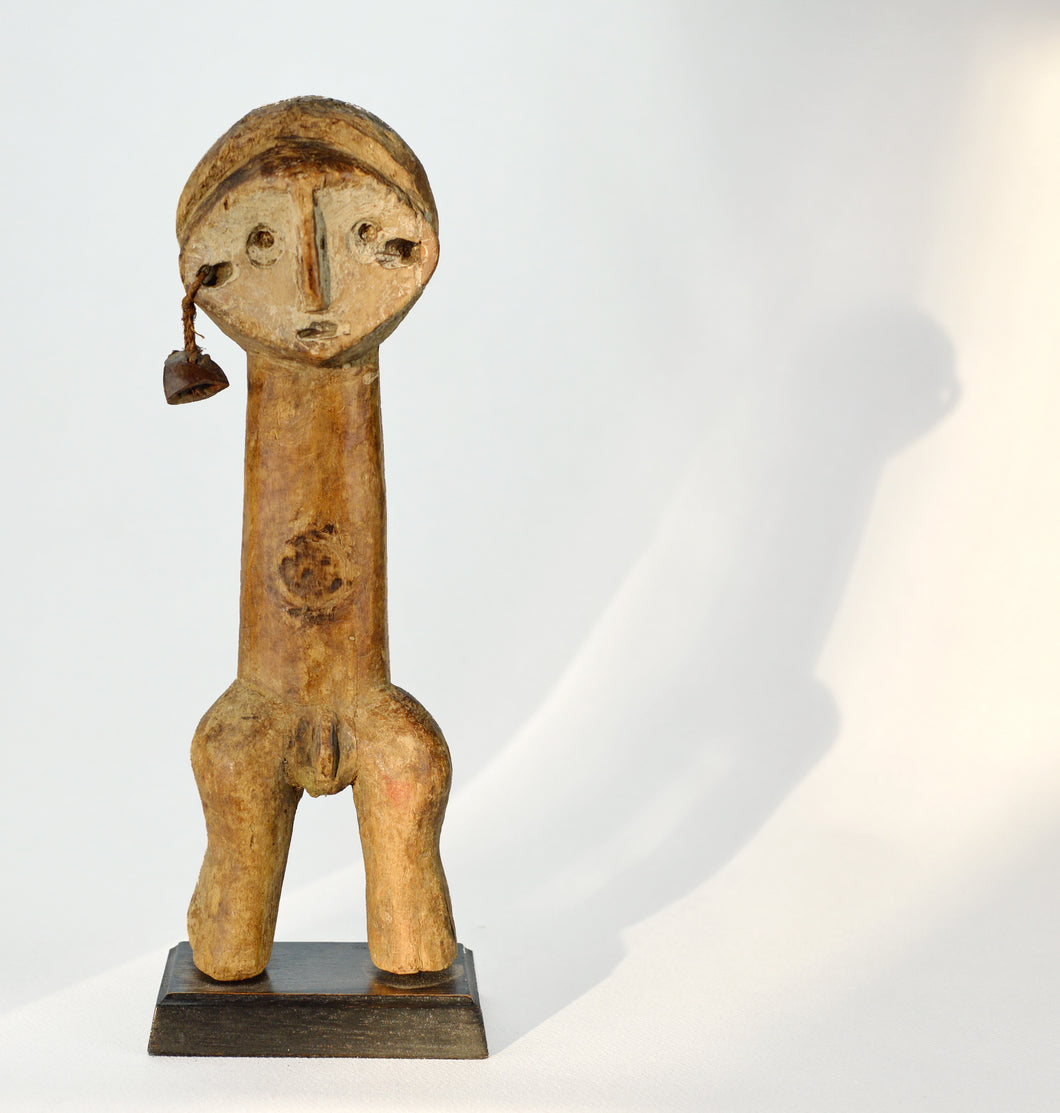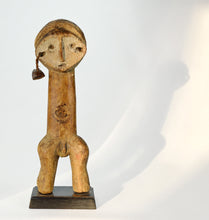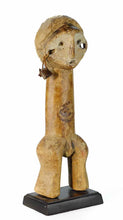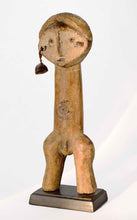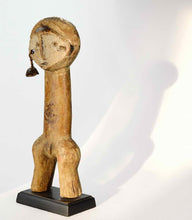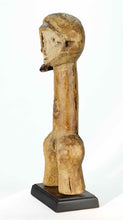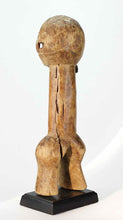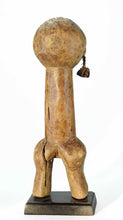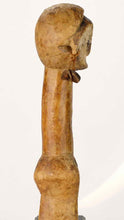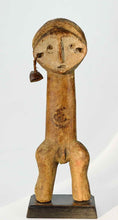MC1185 Statue Lega Culte du Bwami Figure Congo Rdc
Prix régulier
€0.00
€495.00
Solde
Statuette LEGA
Ngeze
Une pièce à l'architecture similaire est bien connue, photographiée in situ et publiée dans LEGA CULTURE, 1973, plates 27 et 30
Après le parcours suivant: - Galerie Khepri (Amsterdam), Irwin et Marcia Hersay, (New York), on la retrouve chez Sotheby's, (New York, Tribal Art 20/05/87 Lot 160), elle est publiée enfin dans Ethique et Beauté, Biebuyck, 2002 page 127 avec la notice suivante:
Représente Ngeze.
--------
Une autre statuette similaire est conservée au Smithsonian Institute à Washington
sous le numéro d'inventaire Object number 73-7-325
Les statuettes utilisées dans le cadre du culte du Bwami sont appelées génériquement Iginga
La statue est indissociable de l'aphorisme qui y est associé
Le Bwami est une association hiérarchisée par grades qui organise la structure sociale et assure la stabilité de la communauté Lega
Chaque passage de niveau donne lieu à des rites d'initiation où l'on parle, chante, danse, mime et expose. Une multitude d'aphorismes sont employés lors des récits et des chants
"L’objectif est de formuler et d’interpréter de multiples manières symboliques les principes, les valeurs morales et philosophiques et les règles du bwami, à chacun et de les inculquer, et d’accorder aux initiés l’attirail pertinent à leur niveau de grade ainsi que leurs références symboliques, et de transmettre le pouvoir, le prestige et les privilèges qui en résultent" (Biebuyk, Sculptures don not speak 2010)
- Joyaux Lega de la collection Benoît Rousseau. Viviane Baeke, MRAC et Benoît Rousseau. 2013. BRUNEAF.
- Les Lega et leur art. Sur les traces d’un rêveur égaré au Congoland Emile-Alexandre Georges. 2005. Musée royal de l'Afrique centrale.
CONGO DRC
LEGA Figure
Ngeze
Very dynamic sculpture, beautiful stylization
A piece with a similar architecture is well known, photographed in situ and published in LEGA CULTURE, 1973, plates 27 and 30
Its route thereafter: Galerie Khepri (Amsterdam), Irwin and Marcia Hersay, (New York), and Sotheby's, (New York, Tribal Art 20/05/87 Lot160)
it is finally published in Ethique et Beauté, Biebuyck, 2002 page 127
with the following note:
Represents Ngeze.
"I will go and ask for food at Ngeze (small rodent), (but) I will not eat any ripe bananas (because Ngeze will have eaten everything)"
Ngeze personifies an individual who wants to achieve a higher initiation but fails in his preparations. He's a salugi, a sloth. He must first cultivate fields and organize large-scale hunts in order to obtain enough food for all the guests before to think about the initiation.
---------------
Another similar statuette is kept at the Smithsonian Institute in Washington
under the inventory number 73-7-325
---------------
The figures used in the cult of the Bwami are generically called Iginga
Collective, sacred properties, they are kept in secret, generally in closed wicker baskets. Their use is reserved at passages to the upper (Yananio) and supreme (Kindi) levels
The figure is inseparable from the aphorism associated with it
The Bwami is a hierarchical association by ranks which organizes the social structure and ensures the stability of the Lega community
Each change of level is accompagned with initiation rites where people talk, sing, dance, mime and exhibit. A multitude of aphorisms are used in stories and songs
The aim is to formulate and to interpret in multiple symbolic ways principles, moral and philosophical values and rules of bwami, to each and inculcate them, and to bestow upon the initiates the paraphernalia pertinent to their grade level together with their symbolic references, and to convey the resulting power, prestige and privileges. (Biebuyk, Sculptures don not speak 2010)
Characteristics:
Please have a look on the pictures.
